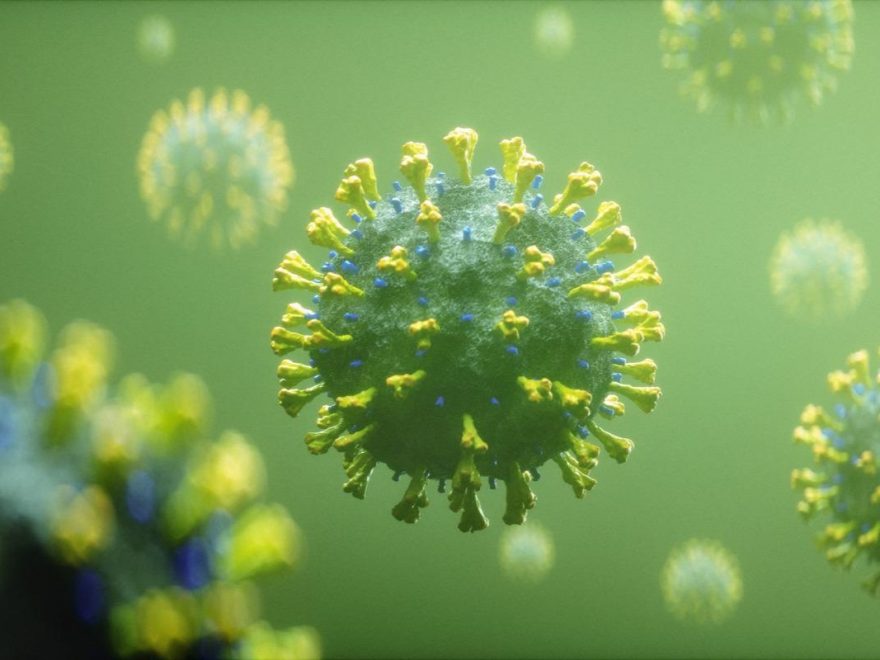In a recent study posted to the Research Square* preprint server, researchers investigated the residual severe acute respiratory syndrome coronavirus 2 (SARS-CoV-2) antigen found in long coronavirus disease 2019 (COVID-19) patients.

According to the World Health Organization (WHO), long COVID-19 (LC) is defined as a condition where patients experience COVID-19 symptoms after the acute phase of the disease. Although many studies have focused on LC in the last year, further research is required to understand the cause and magnitude of LC in convalescent patients
About the study
In the present study, researchers explored the presence of SARS-CoV-2 antigens in tissues of post-convalescent patients.
The team collected samples of the skin, breast, and appendix of two patients who displayed LC symptoms almost 175 to 426 days after being diagnosed with COVID-19. Multiplex immunohistochemistry was used to detect the presence of SARS-CoV-2 antigens in these tissues.
Non-specific staining was ruled out by testing the SARS-CoV-2 nucleocapsid (N) protein antibody on the gastrointestinal (N) tissues obtained by the team in 2019 from a different cohort of patients. Furthermore, the team used ribonucleic acid (RNA)-scope to assess the functional significance of residual viral RNA found in the tissues.
Results
The study results showed that the SARS-CoV-2 N protein was detected in the appendix and breast samples collected from convalescent patients. This indicated that residual viral particles persisted in these tissues for over a year after the COVID-19 diagnosis. However, in the breast samples, the viral N protein was present only in the area adjacent to the tumor and not in the tumor itself. The team also observed negative staining in the skin samples, possibly due to the high turnover rate of skin cells.
RNAscope showed the presence of genomic and replicative intermediate viral RNA in the breast and appendix tissues. The detection of replicative intermediate vital RNA indicated ongoing SARS-CoV-2 replication.
Conclusion
The study findings showed the persistent presence of SARS-CoV-2 antigens within tissues suffering from LC. Moreover, the team found that these antigens could be in a state of active viral replication. The researchers believe that the gastrointestinal tract might have an important role as a SARS-CoV-2 reservoir in convalescent and post-convalescent patients. Furthermore, the absence of SARS-CoV-2 antigen in the skin tissues necessitates further research on the distribution of the virus across different organ systems in patients exhibiting LC.
*Important notice
Research Square publishes preliminary scientific reports that are not peer-reviewed and, therefore, should not be regarded as conclusive, guide clinical practice/health-related behavior, or treated as established information.
- Goh, D. et al. (2022) "Persistence of residual SARS-CoV-2 viral antigen and RNA in tissues of patients with long COVID-19". Research Square. doi: 10.21203/rs.3.rs-1379777/v2. https://www.researchsquare.com/article/rs-1379777/v2
Posted in: Medical Science News | Medical Research News | Disease/Infection News
Tags: Antibody, Antigen, Appendix, Coronavirus, Coronavirus Disease COVID-19, covid-19, Gastrointestinal Tract, Genomic, Immunohistochemistry, Protein, Research, Respiratory, Ribonucleic Acid, RNA, SARS, SARS-CoV-2, Severe Acute Respiratory, Severe Acute Respiratory Syndrome, Skin, Skin Cells, Syndrome, Tumor, Virus

Written by
Bhavana Kunkalikar
Bhavana Kunkalikar is a medical writer based in Goa, India. Her academic background is in Pharmaceutical sciences and she holds a Bachelor's degree in Pharmacy. Her educational background allowed her to foster an interest in anatomical and physiological sciences. Her college project work based on ‘The manifestations and causes of sickle cell anemia’ formed the stepping stone to a life-long fascination with human pathophysiology.
Source: Read Full Article
